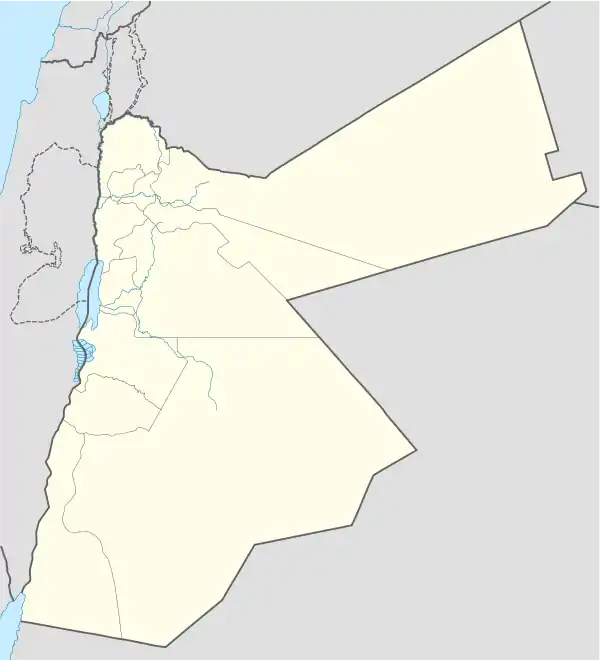
Khirbet en-Nahas, also spelled Khirbat en-Nahas, is one of the largest copper mining and smelting sites of the ancient world, built around 3,000 years ago.[1] It is located in Wadi Faynan, between the Dead Sea and the Gulf of Aqaba, now in Jordan. There is evidence of sophisticated economic and political activity in the valley about 3,000 years ago and archaeologists think it may be the site of an early organized state.[1]
Archaeologist Thomas Levy of the University of California, San Diego, heads a dig at Khirbat en-Nahas that has uncovered an ancient copper mining operation on a scale that he says can have been organized by only "an ancient state or kingdom."[2]
It is through the ground stone tools assembled on site at Khirbat en-Nahas that much research for the understanding of Iron Age copper mining and production is being conducted.[3]

References
- 1 2 "Earth Observing-1: Ten Years of Innovation". NASA.
- ↑ Robert Draper, Kings of Controversy, National Geographic, December 2010.
- ↑ Levy, Thomas E.; Bettilyon, Megan; Burton, Margie M. (2016-10-31). "The Iron Age copper industrial complex: A preliminary study of the role of ground stone tools at Khirbat en-Nahas, Jordan". Journal of Lithic Studies. 3 (3): 313–335. doi:10.2218/jls.v3i3.1648. ISSN 2055-0472.
Further reading
- Ben-Yosef, Erez; E. Levy, Thomas; Gidding, Aaron; W. Jones, Ian; Arbel, Yoav; Higham, Thomas (2014). "Excavations at Khirbat en-Nahas, 2002–2009: An Iron Age Copper Production Center in the Lowlands of Edom". In Ben-Yosef, Erez; Levy, Thomas E.; Najjar, Mohammad (eds.). New Insights into the Iron Age Archaeology of Edom, Southern Jordan. Cotsen Institute of Archaeology Press. pp. 89–245. ISBN 978-1-938770-93-7.